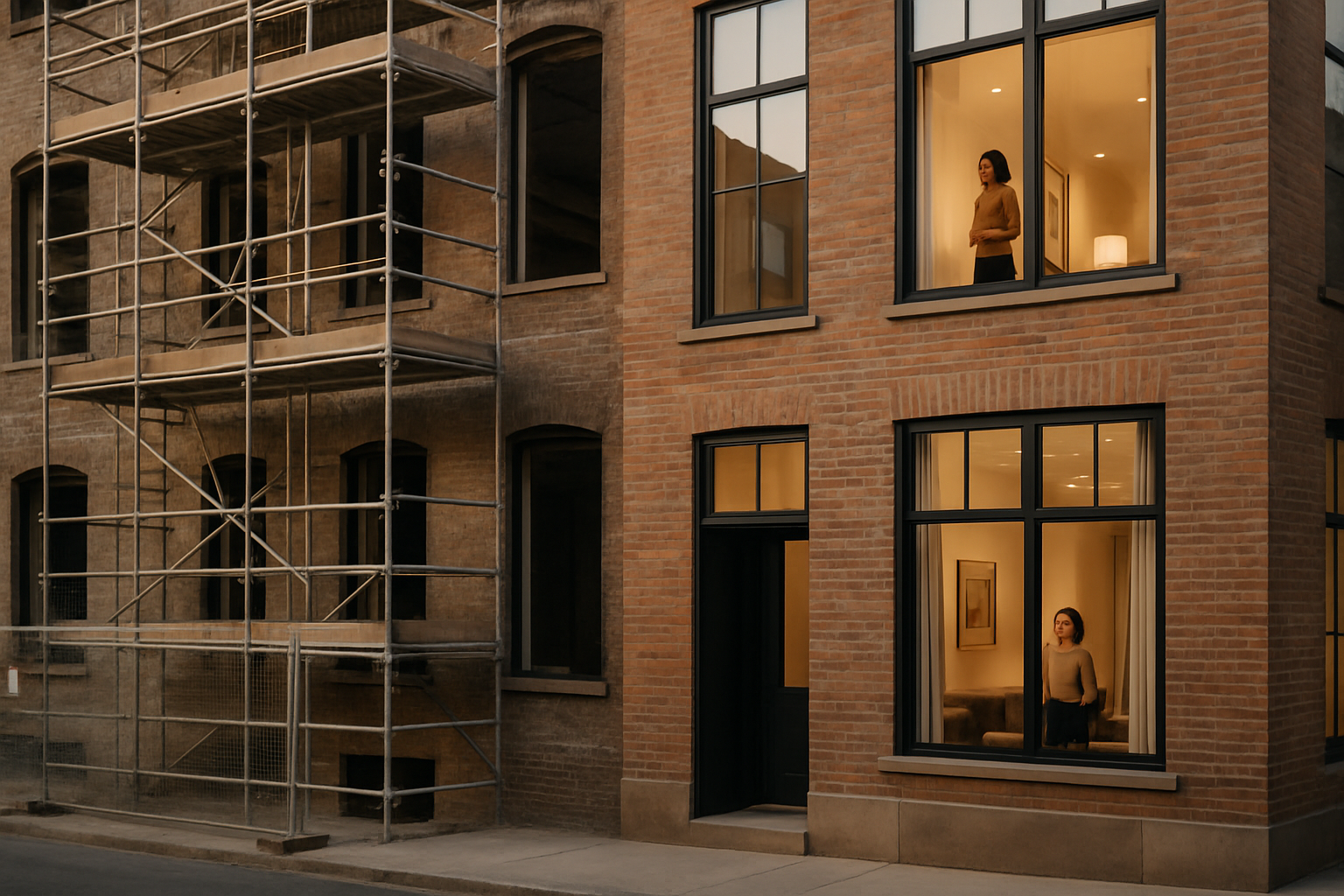The Resurgence of Brownstones: A New Era for Urban Living
In the ever-evolving landscape of real estate, a surprising trend has emerged: the resurgence of brownstones. These iconic urban dwellings, once synonymous with decay and neglect, are now at the forefront of a real estate renaissance. With property values in prime urban areas skyrocketing, brownstones offer a unique blend of historical charm and modern potential that's capturing the attention of savvy investors and homebuyers alike.

The appeal of brownstones lies in their unique characteristics. High ceilings, ornate moldings, and original hardwood floors offer a level of craftsmanship rarely found in modern construction. Their solid construction and spacious layouts provide ample opportunity for customization, allowing owners to create modern living spaces while preserving historical elements.
Moreover, brownstones typically occupy prime real estate in established urban neighborhoods. This combination of location and historical significance has led to a surge in demand, with prices in some areas doubling or even tripling over the past decade.
The Financial Landscape of Brownstone Investments
Investing in a brownstone can be a lucrative venture, but it requires careful financial planning. Purchase prices for these properties can range from $500,000 in up-and-coming neighborhoods to over $5 million in prime locations like New York’s Park Slope or Boston’s Beacon Hill.
Renovation costs are a significant factor to consider. While a move-in ready brownstone might require minimal work, many investors opt for full renovations to maximize value. These projects can easily exceed $500,000, depending on the extent of the work and the quality of finishes.
However, the potential returns can be substantial. Fully renovated brownstones in desirable neighborhoods have seen annual appreciation rates of 5-7% in recent years, outpacing many other real estate investments. Additionally, the option to convert a brownstone into multiple units can create significant rental income opportunities.
Navigating the Challenges of Brownstone Ownership
While the potential rewards are high, brownstone ownership comes with unique challenges. Many of these buildings are over a century old, requiring specialized knowledge and skills for maintenance and renovation.
Historical preservation regulations can also complicate renovation plans. In many cities, brownstones are protected by landmark laws that restrict changes to exterior features. This can limit modernization efforts and increase renovation costs.
Energy efficiency is another consideration. The solid construction that gives brownstones their charm can also make them difficult to insulate effectively. Upgrading heating and cooling systems while maintaining the historical integrity of the building often requires creative solutions and substantial investment.
The Role of Brownstones in Urban Revitalization
The brownstone revival has played a significant role in urban revitalization efforts. As these properties are restored, entire neighborhoods have seen a transformation. Property values increase, new businesses open to cater to residents, and the overall character of the area is preserved and enhanced.
This trend has not gone unnoticed by city planners and developers. Many cities now offer incentives for brownstone restoration, including tax breaks and expedited permitting processes. These initiatives aim to encourage investment in historical properties and maintain the unique character of urban neighborhoods.
However, this revitalization has also raised concerns about gentrification and affordability. As brownstones and surrounding properties increase in value, long-time residents may find themselves priced out of their neighborhoods. Balancing the benefits of urban renewal with the need for affordable housing remains a challenge for many cities.
The Future of Brownstone Real Estate
Looking ahead, the brownstone market shows no signs of slowing down. As urban living continues to gain popularity among millennials and empty nesters alike, the demand for unique, character-filled properties is likely to grow.
Technological advancements are also shaping the future of brownstone living. Smart home systems designed specifically for historical properties are making these homes more energy-efficient and convenient. Virtual reality tours are allowing potential buyers to visualize renovations before making a purchase, streamlining the sales process.
Furthermore, the COVID-19 pandemic has heightened the appeal of brownstones. Their spacious layouts and potential for home offices make them well-suited for remote work arrangements. Many buyers are now prioritizing outdoor space, and the classic brownstone stoop and backyard garden fit this need perfectly.
In conclusion, the brownstone resurgence represents more than just a real estate trend. It’s a testament to the enduring appeal of historical architecture and the dynamic nature of urban living. For investors and homebuyers willing to take on the challenges, brownstones offer a unique opportunity to own a piece of history while participating in the ongoing evolution of our cities.





